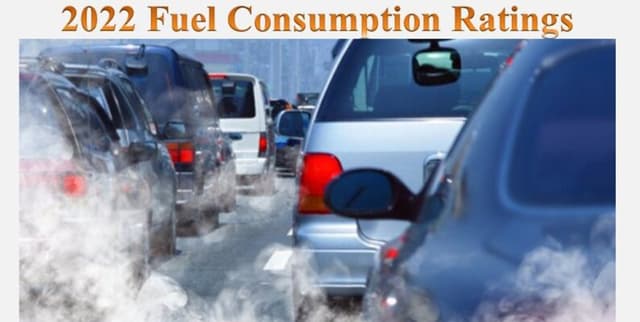Canada New Vehicle Ratings 2022
Product Reviews & Feedback
Tags and Keywords
Trusted By




"No reviews yet"
Free
About
This dataset provides detailed fuel consumption ratings and estimated carbon dioxide (CO2) emissions for new light-duty vehicles retailed in Canada for the 2022 model year. It includes key metrics such as city, highway, and combined fuel consumption, along with CO2 emissions in grams per kilometre and tailpipe emissions ratings for both CO2 and smog-forming pollutants. The data is designed to offer insights into vehicle efficiency and environmental impact for the Canadian market.
Columns
- Model Year: The vehicle model year, consistently 2022.
- Make: The manufacturer of the vehicle. There are 39 unique makes, with Ford and Chevrolet being the most common.
- Model: The specific vehicle model type. This includes designations like 4WD/4X4 (Four-wheel drive), AWD (All-wheel drive), FFV (Flexible-fuel vehicle), SWB (Short wheelbase), LWB (Long wheelbase), and EWB (Extended wheelbase). There are 715 unique models, with Silverado 4WD being the most frequently observed.
- Vehicle Class: The classification of the car vehicle. SUV: Small and SUV: Standard are the most common classes among the 14 unique categories.
- Engine Size(L): The engine displacement in litres, ranging from 1.2 to 8.0 litres, with a mean of 3.2 litres.
- Cylinders: The number of engine cylinders, varying from 3 to 16, with a mean of 5.67.
- Transmission: The type of transmission, including automatic (A), automated manual (AM), automatic with select shift (AS), continuously variable (AV), and manual (M), along with the number of gears (3-10). AS8 and A8 are the most frequent types.
- Fuel Type: The type of fuel the vehicle uses. Z and X are the predominant types among the 4 unique categories.
- Fuel Consumption (City (L/100 km)): City fuel consumption ratings measured in litres per 100 kilometres, with a mean of 12.5 L/100 km, ranging from 4.0 to 30.3 L/100 km.
- Fuel Consumption (Hwy (L/100 km)): Highway fuel consumption ratings measured in litres per 100 kilometres, with a mean of 9.36 L/100 km, ranging from 3.9 to 20.9 L/100 km.
- Fuel Consumption (Comb (L/100 km)): The combined fuel consumption rating (55% city, 45% highway) in litres per 100 kilometres, with a mean of 11.1 L/100 km, ranging from 4.0 to 26.1 L/100 km.
- Fuel Consumption (Comb (mpg)): The combined fuel consumption rating (55% city, 45% highway) in miles per imperial gallon, with a mean of 27.2 mpg, ranging from 11 to 71 mpg.
- CO2 Emissions (g/km): Tailpipe carbon dioxide emissions for combined city and highway driving, in grams per kilometre, with a mean of 259 g/km, ranging from 94 to 608 g/km.
- CO2 Rating: The tailpipe CO2 emissions rated on a scale from 1 (worst) to 10 (best), with a mean rating of 4.54, ranging from 1 to 10.
- Smog Rating: The tailpipe emissions of smog-forming pollutants rated on a scale from 1 (worst) to 10 (best), with a mean rating of 4.95, ranging from 1 to 7.
Distribution
The dataset is provided in CSV format and is 73.01 kB in size. It contains 946 valid records for the 2022 model year, structured as tabular data. All columns have complete data, with no mismatched or missing values.
Usage
This dataset is ideal for:
- Environmental impact analysis of light-duty vehicles.
- Comparative studies of vehicle fuel efficiency and emissions.
- Policy development related to automotive environmental standards.
- Consumer guidance on purchasing fuel-efficient and low-emission vehicles.
- Machine learning applications such as linear regression for predicting fuel consumption or emissions.
Coverage
The dataset covers new light-duty vehicles for retail sale in Canada for the 2022 model year. It includes data points for various vehicle makes, models, classes, engine sizes, and transmission types available during that specific period.
License
CC0: Public Domain
Who Can Use It
- Automotive Industry Analysts: For market research, competitive analysis, and product development insights.
- Environmental Researchers and Scientists: To study vehicle emissions trends, fuel efficiency, and their impact on air quality.
- Government Agencies: For regulatory assessment, policy formulation, and public reporting on vehicle performance.
- Consumers and Car Buyers: To compare vehicles based on fuel economy and environmental ratings, informing purchasing decisions.
- Data Scientists and Machine Learning Engineers: For predictive modelling, classification, and statistical analysis related to vehicle characteristics and environmental outputs.
Dataset Name Suggestions
- Canada 2022 Vehicle Fuel & Emissions
- 2022 Canadian Light-Duty Vehicle Data
- Canadian Auto Emissions & Fuel Economy 2022
- Canada New Vehicle Ratings 2022
Attributes
Original Data Source: Canada New Vehicle Ratings 2022
Loading...
Free
Download Dataset in CSV Format
Recommended Datasets
Loading recommendations...
